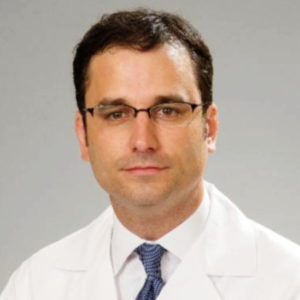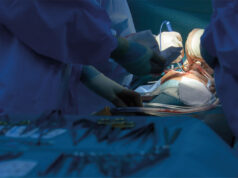
Five frequently performed vascular surgeries at a prominent New Orleans-based health system between 2019 and 2022 yielded an average yearly decrease in net revenue of -11.5%, lending weight to growing national evidence that lay bare how increasing direct costs are outpacing reimbursements at U.S. hospitals.
Data from Oschner Health were presented at the 2024 Society for Clinical Vascular Surgery (SCVS) Annual Symposium in Scottsdale, Arizona (March 16–20), with presenting author Clayton Brinster, MD, highlighting that “the significantly lower, concomitant increase in reimbursement demonstrates an ominous trend of eroding hospital revenue for vascular surgery.”
The analysis out of New Orleans comes amid escalating healthcare costs in the U.S. in the wake of the global pandemic—now nearly $5 trillion per year, or about 20% of gross domestic product (GDP). Brinster pointed to data showing that by 2022, more than 50% of U.S. hospitals were operating on a negative margin. Despite signs of some gains early last year, the former Oschner Aortic Center senior staff vascular surgeon, now co-director at the UChicago Medicine Center for Aortic Diseases, set a bleak backdrop to data pulled from his old institution’s balance sheet.
“In 2024, after the withdrawal of government emergency funds [following the COVID-19 pandemic], the future remains uncertain and unstable for hospitals and health systems,” he said.
Why? He ran through some of the reasons. Inflation. Increasing costs, particularly related to a nursing workforce shortage leading to “astronomical agency labor” costs. Increased expenses per patient during the 2019–2022 study period. Hospital expenses “were no less dramatic,” Brinster said, explaining: “When we compare hospital expense growth compared to Medicare reimbursement, we see that cumulative hospital expense increase was more than twice the cumulative increase in Medicare reimbursement per patient between 2019 and 2022.”
Which leads to the focus of the Oschner analysis: the impact on the financial performance of vascular surgery. Brinster and colleagues sought to examine the evolving costs, reimbursement and net revenue trends associated with the five most common vascular surgeries at the institution over the four-year period of study: arteriovenous fistula creation, arteriovenous graft placement, carotid endarterectomy, endovascular aortic repair, and lower extremity angiogram with percutaneous transluminal angioplasty and/or stent. Direct hospital costs and reimbursement perencounter were examined, along with overall reimbursement patterns and insurance payor mix.
They found an average annual increase in direct cost of 31% per case between 2019 and 2022. Likewise, Brinster et al pinpointed an annual increase in reimbursement per case of more than 20% across the same period. “The differential in increased direct cost/case versus a more modest increase in reimbursement/case yielded an average yearly decrease in net revenue of -11.5%,” he reported at SCVS 2024.
Drilling deeper into specific data on all payors for inpatient cases only, the numbers showed that reimbursement lagged behind directs costs by 12%, Brinster explained. “And when we examined Medicare patients only, that number was even greater at 20%.” Meanwhile, the equivalent figures for outpatient cases demonstrated that reimbursement was lagging behind direct costs per case by 25% for all payors and 33% per case for Medicare-covered patients. Insurance payor mix did not change over the study period, with Medicare comprising 71% of all payors. “Why does this matter to vascular surgery? Hospital administrators determine the value of our services by something called contribution to indirect [CTI], or profit margin,” said Brinster. “Eroding margins for vascular surgery could jeopardize our standing within our respective health systems, and will reduce our resources and compensation allocation going forward.”
As he looked ahead, Brinster highlighted the need for action from Washington, D.C. “What can be done in the future? To ensure hospitals have the capability for high-quality, high-acuity care, large-scale governmental support will be required. Congress will have to enact policies that support the healthcare workforce.”
In the questions that followed his presentation of the data, the potential role for the office-based lab (OBL) to alleviate the situation emerged, with session moderator Jason Lee, MD, chief of vascular surgery at Stanford Medicine, asking Brinster whether the onus should fall on the profession to increase cost-effectiveness and efficiency and “therefore raise our value to the hospital system.”
Brinster acknowledged how the OBL is a “hot topic” amid concerns not just around financing but also necessity of procedures. The morality of the necessity of procedures is “a completely different argument” that will require standards to be determined and held up, he answered. “The shift to the OBL will be one of the critical factors to recoup better reimbursement, at least as reimbursement patterns stand now,” Brinster added.












